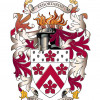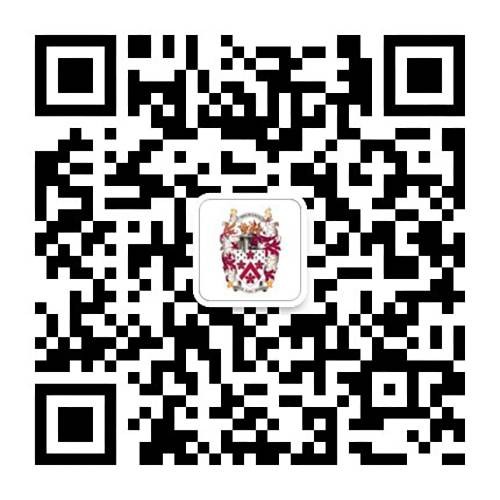Learning Maths Starts from Day 1
Walk into Ginene Miller's Nursery classroom on any given day and you'll find a table heaped with stuff and a whole bunch of children gathered around it.
In the children’s hands are coins, pegs, buttons, sticks and blocks of every shape, size and color and they are busy sorting and stacking, investigating and building.
This isn't free play time. This is maths class.
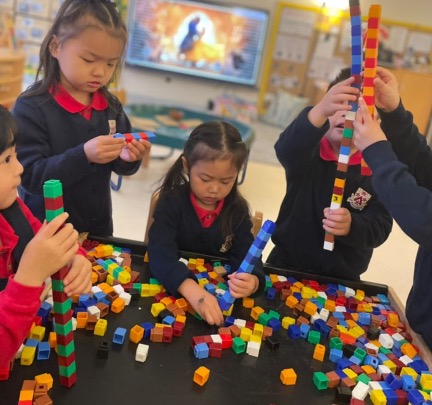
"This is a good example of how we approach maths in Early Years," Ms Miller explains. "The tray brings together many of the loose parts we use for maths into one easily accessible area. It's fascinating to watch the children interact with it in different ways. One girl used the pegboard and sorted all the mini pegs into colors. Another child found the ruler and went around the classroom measuring things. Other learners used scales and coins to explore weight and amounts. None of this was scripted per se, it all comes from the children's own curiosity and initiative."
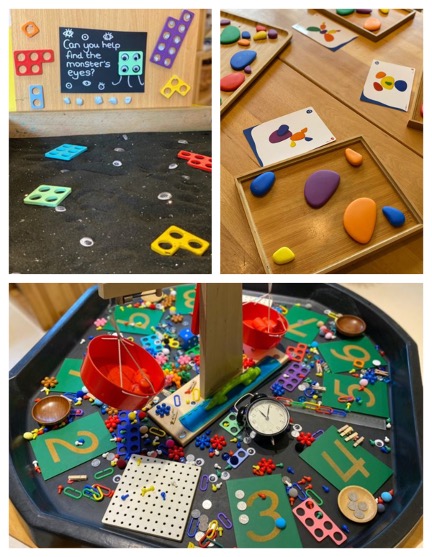
Aptitude for Maths
Every child has an natural curiosity for mathematics. It is a universal language which all children begin learning from the day they are born. Developing fluency in mathematics gives children enormous confidence and underpins many skills which are key for success in the future including logic, pattern recognition, and abstract reasoning.
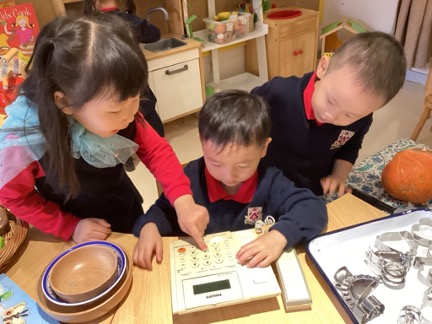
Mathematics forms an integral part of our Early Years curriculum. At Dulwich Pudong children as young as 2 years old begin a structured engagement with mathematical concepts.
Our pioneering approach takes advantage of each child's natural aptitude and curiosity to lay a foundation of mathematical knowledge and to instill a love for maths that will inspire them for the rest of their lives.
Maths in Early Years

Ginene Miller is Head of Nursery (catering to children age 3-4 years old). She's been an Early Years educator for 10 years, 6 of which have been here at Dulwich Pudong and she has a passion for making maths accessible and fun for our youngest learners through hands-on learning that follow the children’s interests.

Our approach to teaching maths in the Early Years sits squarely within our inquiry based pedagogy which places the student at the centre of the learning journey.
"The traditional approaches to teaching maths takes the child as a recipient of information rather than an active co-creator of knowledge," Ms Miller explains. "If a teacher is saying to Early Years children, 'This is number 1, what comes next?' then they are doing the children a disservice."
From extensive neuroscience research, we know that young children explore their world primarily through tactile engagement - sight, sound, touch and taste. That's why at Dulwich Early Years maths starts at the foundations of numbers - what they mean, what they looks like, what they feel like, even what they taste like.
"The idea is to start from the real world with hands-on physical experiences before we build toward more abstract understandings," says Ms Miller.

To support that process our EY teachers use tactile objects to engage children to independently explore mathematical concepts for themselves. The role of the teacher is to facilitate the conversation and stimulate the child's thinking process.
Tactile objects come in five main categories:
- Loose parts
- Numicons
- Storybooks
- Songs
- Cooking
The table mentioned above is a great example of loose parts in action.
Our Early Years teachers set out objects with an expectation of how children might interact with them, but children may not use them in the way the teacher set them out. They may pick up the Numicon and use it as a gun or a keyboard or a telephone. And this is completely okay! That's where the teaching magic comes in, where the teacher guides the child from their starting point toward the competencies set out in the curriculum.
Ms Miller shares an example:
"One of our children picked up a Numicon piece and pretended to use it as a telephone, so we ran with it. I got some old mobile phones and then together with the children made a little address book with Spider Man's telephone number in it. The children then had to figure out how to press the numbers in the right sequence to call Spider Man. In this simple exercise they are actually learning very sophisticated mathematical concepts such as abstract representation of numbers, sequences of numbers and eye-hand coordination."
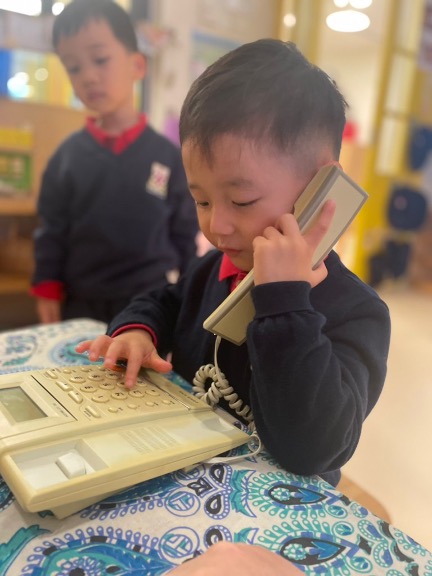
Our approach is both personalised to the student and contextualised to circumstances, perhaps an interest that they have shown, a current holiday or something from a specific cultural background. Ultimately the success of the approach is based on the experience and skill of the teacher in recognising, leading, and challenging each student to continually extend their knowledge.
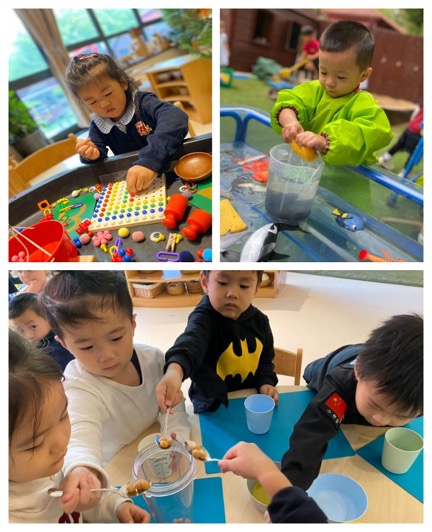
Summary of our EY approach to maths:
- Personalised to the individual student
- The curriculum sets out clear goals and objectives for mathematical learning.
- Knowledge and capability extensions are built into the process so that each child always has a next step
- Assessment happens continuously in real-time
Our student-led approach ensures that children are better equipped to absorb knowledge and to recall it. It reduces the friction many children feel when they are fed mathematics in the wrong way. Asking children questions they aren't able to answer reinforces the idea that maths is "hard" and puts many students off it from the very beginning.
In this way, each child builds a strong foundation of mathematical knowledge putting them in a great position to thrive in the advanced mathematical pathways which are introduced in Year 1, Year 2 and beyond.




